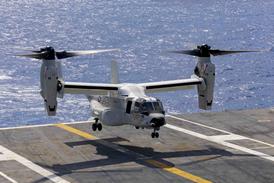US investigators have concluded that misidentification of Newark's runway 29 lighting during a night-time approach led to a Continental Airlines Boeing 757-200 crew landing on a parallel taxiway.
The US National Transportation Safety Board's report into the 28 October 2006 incident says the first officer of the aircraft, operating flight CO1883 from Orlando, was conducting his first approach to runway 29.
The NTSB says the aircraft approached the airport from the north, initially on an instrument approach to runway 22L, before air traffic control instructed a "circle to land" procedure, involving a right turn at about 900ft (300m) altitude, to line up with runway 29.
"As the first officer rolled the aircraft level, he noted four white lights on the precision approach path indicator which the flight crew believed was located to the left of the runway," it states.
This misidentification of the position of the path-indicator lighting - which is actually situated to the right of runway 29, as correctly described in the instrument procedures for Newark - appears to have been central to the incident.
Newark was experiencing visual meteorological conditions at the time. Runway 29's high-intensity runway edge-lights were configured at their lowest brightness setting, and the runway's centreline lights and runway-end identifier lights were confirmed as being on.
Taxiway Z runs parallel to the right of runway 29. The brightness of its green centreline lights are fixed according to a five-setting scale and, at the time, these lights were lit at the third setting.
After its approach, the Continental 757 touched down on taxiway Z near the intersection of taxiway R. None of the 154 passengers and crew was injured.
 |
|---|
Inspectors from the US FAA subsequently stated that all lighting systems for the runway and the taxiway were illuminated and operating normally. The NTSB also points out that six other aircraft, arriving within 10min of the Continental 757, landed without incident on runway 29.
It concludes: "The flight crew's misidentification of the parallel taxiway as the active runway resulted in the flight crew executing a landing on the taxiway. Contributing was the night lighting conditions."
Tests by Continental Airlines, the NTSB and Newark Airport's operator to reproduce the flight showed that, during the approach, the taxiway "appeared slightly brighter" than the runway. But the NTSB says the runway-end lights, path-indicator lights and differences in centreline lighting colours were "clearly visible".
Since the incident, Newark's operator has raised the runway 29 light settings and reduced the intensity of lights on taxiway Z. Continental Airlines has also secured approval for new area navigation procedures for runway 29 arrivals.
Source: Flight International


























